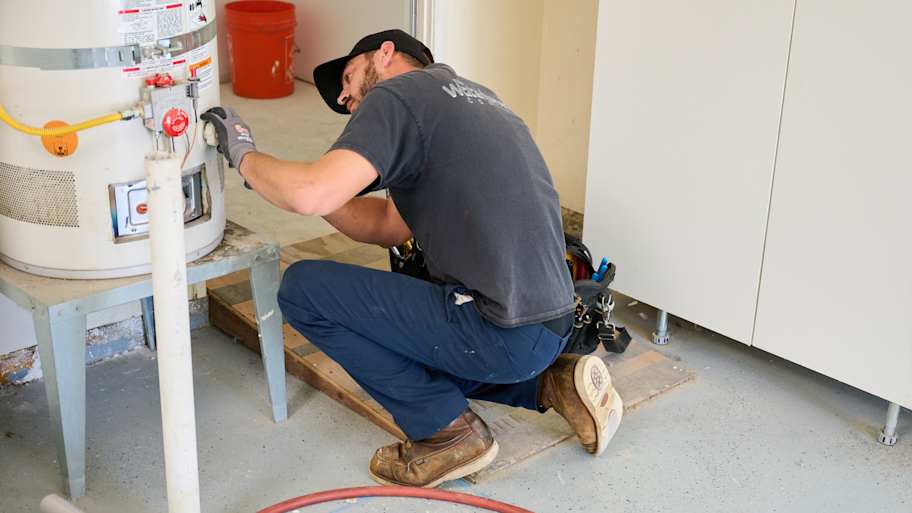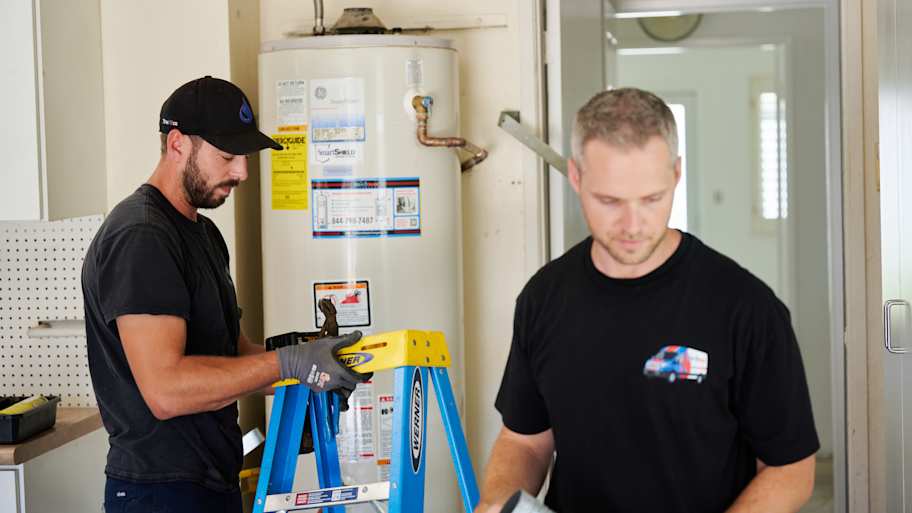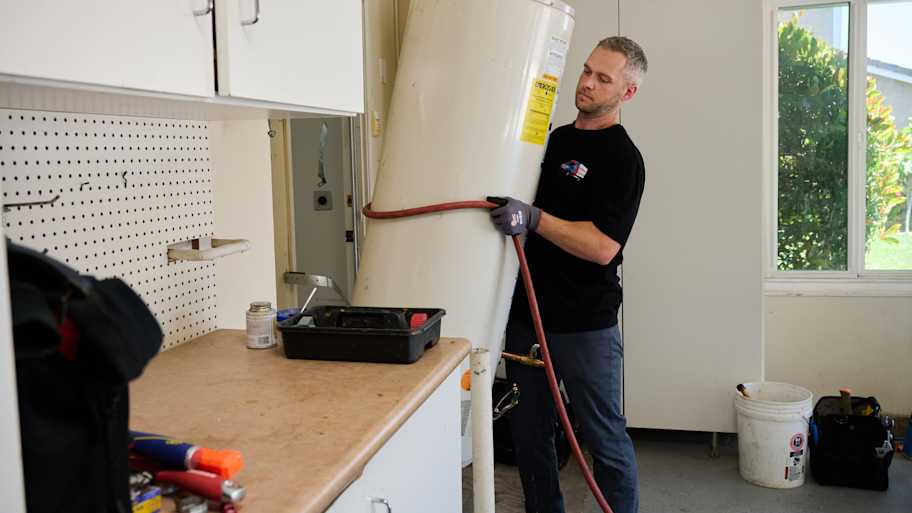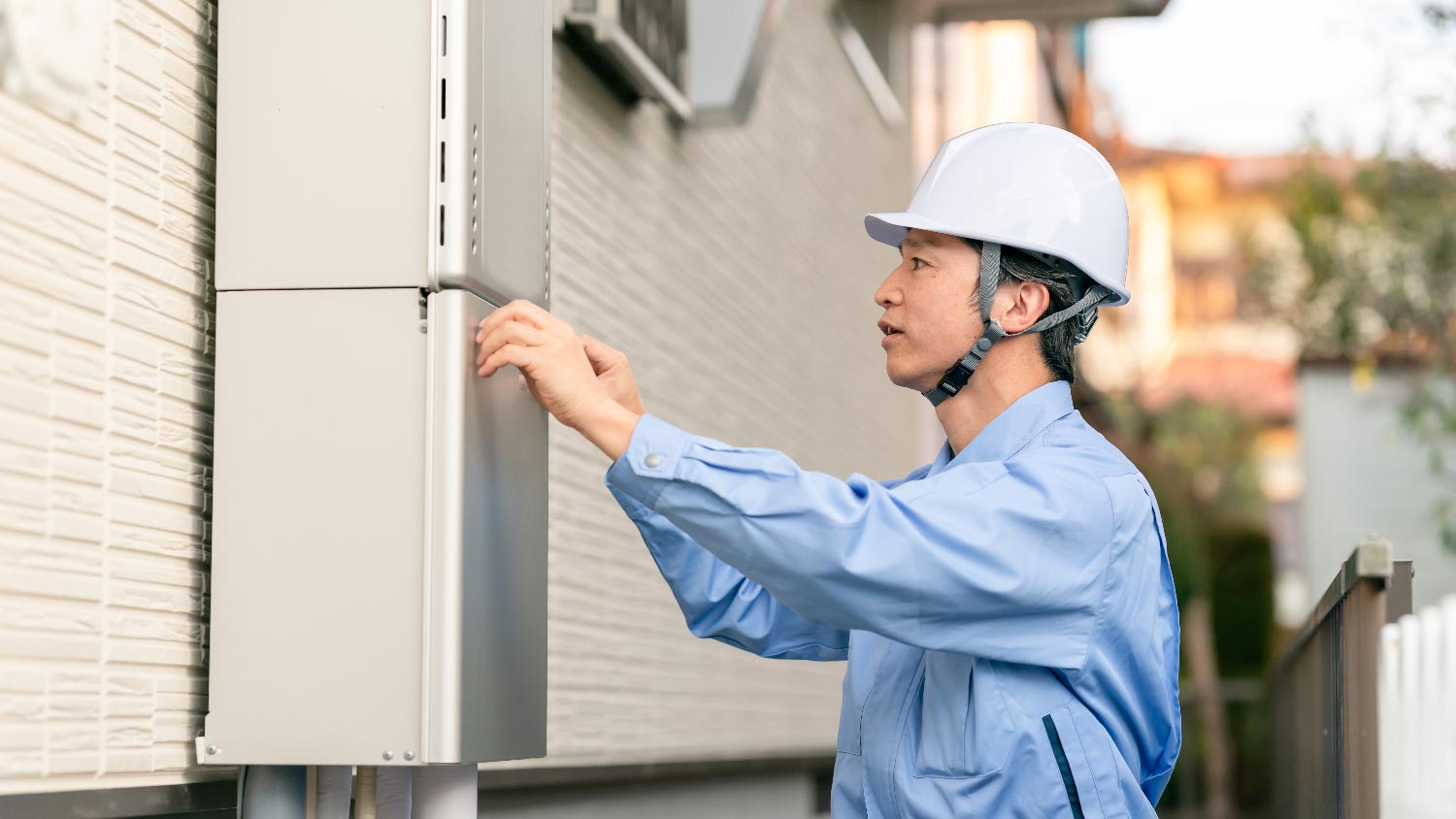How to Turn Off Your Water Heater
Learn to cool down your heater with care


- A hose
- Labels or tags for your circuit breaker (optional)
There are a few reasons why you might want to turn off your water heater. Hopefully, you only need to drain the water as part of routine maintenance. But you might also notice one of the signs that your water heater is about to fail—knocking sounds or cloudy water, for instance—and want to shut it off before a local water heater repair service can take a closer look.
Knowing how to turn off your water heater safely is a skill every homeowner should have, and we’re here to show you how to do it.
Prepping to Turn Off Your Water Heater
Before you can turn off your water heater, you need to find it! Some homes place water heaters in inconspicuous places as they aren’t exactly easy on the eyes. Look for your water heater in your garage or basement first; that’s the most common installation place, so that if there is a leak, the water doesn’t spread to the lower levels of the home. Some homes, unfortunately, have them installed in attics and crawl spaces, so check there, too.
Ideally, you should practice the steps below so you know where to find home elements, like your circuit breaker and gas line, before you need to search for them in a panic. Don’t wait until something has gone wrong—familiarize yourself with your water heater and how it connects to your home to prevent a molehill from becoming a mountain.
Turn Off the Gas or Electricity to the Heater
 Photo: The Toidi / Adobe Stock
Photo: The Toidi / Adobe StockYour home has either a gas or electric water heater. To turn off the power to your electric water heater, you’ll need to locate your circuit breaker for your heater and flip the switch to the off position. The circuit breaker for your water heater should be near the heater itself, on an exterior wall, or inside your basement. Make sure to put a label or tag on the breaker warning others not to touch it, so no one turns it back on while you are working.
To turn off your gas water heater, turn the knob on the thermostat to the off position. The thermostat is usually located in the front of the heater, near the bottom. You should also turn off the gas supply line, located on the gas line closest to your water heater. Turn the level on the gas line valve until it is perpendicular to the gas line.
Shut Off the Water Supply
 Photo: perfectlab / Adobe Stock
Photo: perfectlab / Adobe StockNow that you’ve disconnected the water heater from a power source, you need to shut off the water supply. Turn the circular supply valve clockwise until you can’t anymore; this will cut off the water. Once you have stopped allowing water to flow to your water heater, you will be able to use water in your bathroom and kitchen, but they will not provide any warm or hot water.
If you can’t find the knob connecting the water heater to the water source, you can shut off water for your entire home while you complete the steps. The valve to shut off your home’s water supply should be next to your water meter.
Drain the Water
 Photo: Lost_in_the_Midwest / Adobe Stock
Photo: Lost_in_the_Midwest / Adobe StockOnce the power and water are turned off, you should drain the water from your water heater. First, wait a few hours to allow the water in the tank to cool down—12 hours is the recommended wait time. Look on the bottom of the heater for a drain valve where a hose can connect; connect a hose there. Run the other end of the hose somewhere it can safely drain—a tub, outside, or a floor drain. Open a hot water faucet somewhere in your home to allow air into the heater as it drains, and then open the heater’s drain faucet to let the water out. Remember that the water will be warm or hot, so proceed with caution when completing this step.
What Are the Main Reasons to Turn off the Water Heater?
Several common reasons that you might need to turn off your water heater include:
To manage safety concerns, such as overheating or gas leaks
To perform maintenance, like draining and flushing the tank
To save energy when you're out of town and not using the water heater
To transition to a new water heater
To winterize a home that's not in use during the cooler months
To address water contamination during a natural disaster
To address malfunctions and other problems
Is It Safe to Turn Off My Water Heater?
It's safe to turn off a water heater, provided it's done correctly. You can often switch off electric water heaters via a circuit breaker or a switch on the unit itself. Turning off gas water heaters is a little trickier since you need to shut off the gas supply. Gas water heaters also pose higher safety risks, so if you're not sure how to turn it off, call a pro to do it for you.
DIY Turning Off Your Water Heater vs. Hiring a Pro
Turning your water heater off is not typically a job that requires professional help because you don’t need any special equipment. All you need is patience, time, and a hose. It’s a good idea to learn how to turn your water heater off in case of emergencies because the time it takes waiting for a professional to arrive could be critical moments, especially in the case of a gas or water leak.
However, if there is a leak, your unit is malfunctioning, and over 10 years old, or you hear odd banging sounds from the heater, it’s time to hire a local plumber to take a look and remedy the situation.
Once a year is recommended, but if you live in an area with hard water, you should drain your water heater every six months to prevent mineral build-up inside your unit.
Yes, you can still use water when the water heater is turned off, but you won't have any hot water once the warm water in the tank is depleted. Tankless water heaters won't have any hot water at all when turned off. However, if the water heater is off for a prolonged period of time, bacterial growth can happen in the tank due to water stagnation, so it's best to use the heater regularly.
The cost to repair a water heater varies based on the damage and necessary fixes, but in general, you can expect to pay between $225 and $960 .














